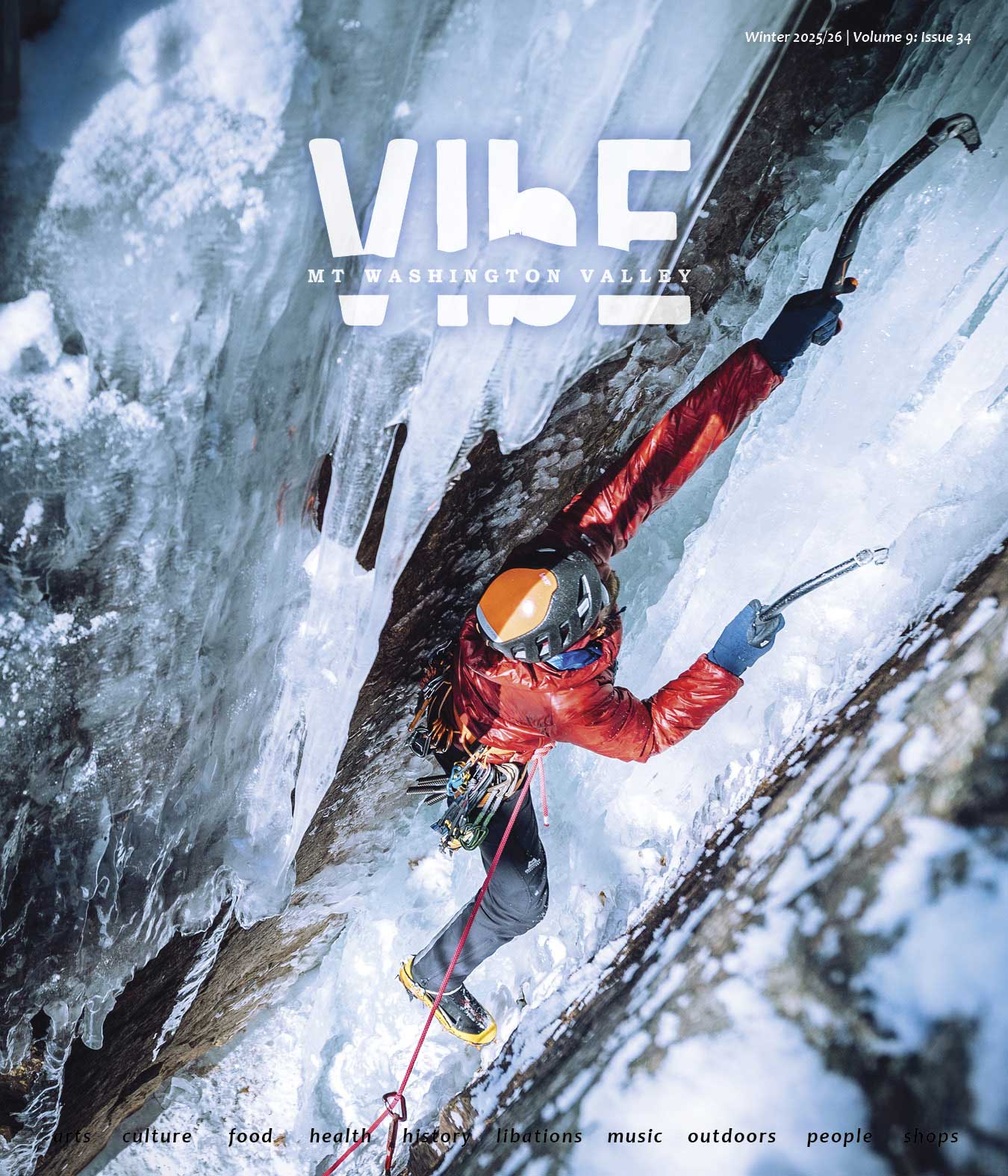By Heather Carrigan
Did You Know?
Know of an interesting story, past or present, pertaining to the Valley? See something here that may not be accurate? Let us know! Send suggestions or corrections to info@mwvvibe.com.
Thorn Mountain Ski Resort

Thorn Mountain, NewEnglandSkiHistory.com photo
Thorn Mountain Ski Resort was tucked into the cozy town of Jackson, NH and hosted winter carnivals with amateur ski jumping competitions, starting in the 1920s. These competitions made national headlines, and by the 1930s, Moody’s Inn (now Whitney’s Inn), introduced a lift and night skiing, putting Jackson on the ski map. The town received $2,000 to develop ski slopes on Thorn, Black, and Iron Mountain. Further post-WW II investments acquired the town 1,100 acres at Thorn Mountain for a ski resort with lift service to the lower mountain and three rope tows for the upper portion. The 1950s started with the highest snow totals since the late 30s, but the rest of the decade was plagued by firm conditions or snowless winters. By the end of the 50s, unsafe lifts and trail developments in other parts of the Valley saw the end of Thorn Mountain.
Howard Dearborn

Photo mainememory.net
Howard Dearborn was born in Cleveland, Ohio, and from a young age was interested in machinery. He worked in his father’s machine shop until he opened his own in 1941. “Howard Manufacturing Company” was a small operation, but was able to contribute to the war effort of WW II. In 1945, he moved his family to the Mount Washington Valley area, where he bought the former Eastman House near Hurricane Mountain in Kearsarge, NH. He opened the Dearborn Inn, a quaint inn by Mount Cranmore, a mountain he developed a successful relationship with. In the winters, Dearborn Inn guests were given rides in Dearborn’s creation, the Sleighmobile, a heated transport that brought guests to Cranmore Mountain. Dearborn later relocated to Fryeburg, ME where he bought an old airport building to start Dearborn Precision Tubular Products. They manufactured parts for tanks, airplanes, nuclear submarines, and medical equipment, among others. www.mainememory.net
Hans Thorner

Hans Thorner
Avid skier, Hans Thorner, was born in Switzerland in 1908 and came to the United States in 1932, with the hopes of making a living as a ski instructor. After a few years at several mountains, Thorner settled in the White Mountains of New Hampshire. One of the first certified ski instructors in the country, Thorner became the director of the ski school at The Glen House Hotel (Gorham, NH) for the winters of 1939 and 1940. Later in 1940, Thorner bought the Jackson House—an old, rundown inn—and opened the Thorner Inn, the first in the country where one could “ski all the way home” from the trails. Thorner began shooting ski films for Swiss Air, filming the 1948 Olympics, running the Hans Thorner Ski School at Cannon Mountain, and eventually opened Magic Mountain (VT) in 1961.
Shovel Handle Pub Name Origin

Photo from neskimuseaum.com
Edwin Moody was a farmer in Jackson, NH, who owned a hill and a farmhouse, and took in lodgers. Moody had the idea to invest in the hill behind his property, and in 1935 put up an overhead-wire rope tow, a rival of the rope tows in the area. Skiers began to flock to Moody’s ski hill, but just a year later, Moody sold the farm and tow to Bill and Betty Whitney, avid hikers who renamed the property Whitneys’. Bill Whitney upgraded the rope tow with a bullwheel so the rope would not slip off as easily, and he eventually added 72 shovel handles from Sears Roebuck to make it easier for skiers to hold on. The nickname the “shovel handle” was born and remains the name of the bar in Whitney’s Inn.
Olympic Skiing
In 1935, racers began to use the less intimidating portions of the Headwall of Tuckerman Ravine (namely the Lip) as a training ground for the Olympic Trials. Racers competed for a spot on the US Ski Team. The following winter of 1936 was the first Olympic games to feature alpine skiing.
Ski Villages
The hotels and homes that make up modern day ski villages can be traced back to New Hampshire with some of the first in existence. In 1936, a village was planned to be built on the Wapack Trail on Pack Monadnock, in southern New Hampshire. During the late 1940s, Hubert von Pantz of Austria, sold land and chalets at the base of Cannon Mountain, a village that became known as Mittersill.
Snow Engineering
Berlin, New Hampshire was the birthplace of Sel Hannah, a snow engineer who helped design ski trails all over the country during the 1940s. But snow engineering was not recognized as an actual profession during that time. In 1947, he started Sno Engineering with his wife and partners, paving the way for ski trail and resort design to be recognized as a profession today.
Dr. Irving Langmuir
Dr. Irving Langmuir, a scientist and an avid skier, first discovered skiing when he was in Germany attending graduate school in 1903. He won the Nobel Prize in chemistry in 1932. Langmuir’s passion for skiing and science brought him to the home of the world’s craziest weather, the summit of Mount Washington. During WW II, he spent many years studying icing on airplane wings, using Mount Washington’s severe temperatures to experiment and gather information.
Early Backcountry Skiing Trails
Before ski trails and ski slopes, many backcountry skiers in the area used what was left of carriage roads to summit peaks. There were more than a few in Crawford Notch, with a popular carriage road heading up Mount Willard. This was prior to the 1930s, when the Civilian Conservation Corps (CCC) was created to give young workers jobs, and cutting ski trails was among their workload.







